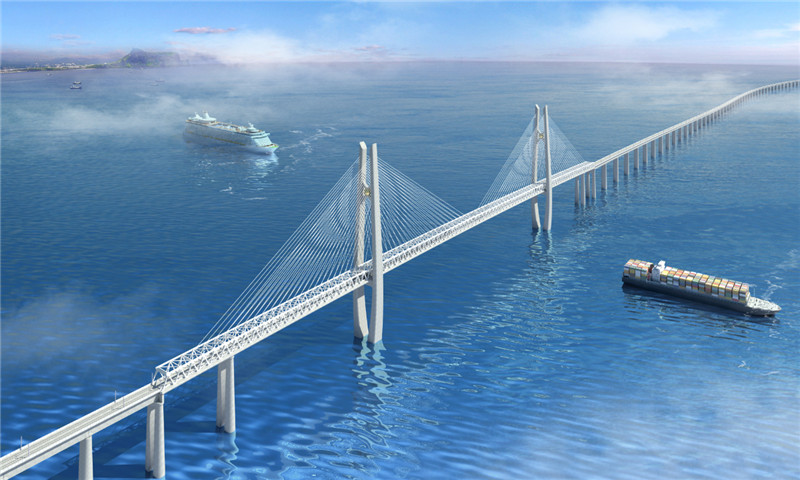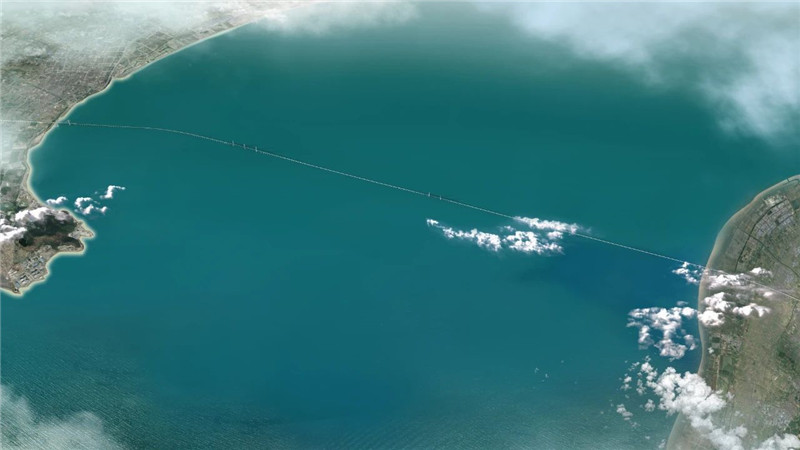Xiaobu learned from the Municipal Railway Construction Office that on the morning of March 29, the engineering geological survey of the newly-built Hangzhou Bay Bridge (cross-sea part) of the Tongsu-Jiaong-Ningbo Railway officially entered the tidal flat area for construction, with a tentative construction period of 1 month.

Previously, the overall survey work officially started on October 18, 2020. A total of eight drilling platforms have been invested. The completed work accounted for about 70% of the total work. It is expected to complete all the drilling work in May, 2 ahead of the original plan. To be completed in 3 months.
According to reports, geological survey is the most critical technical link of survey and design. This work is about to be completed, marking a strong step forward for the preliminary work of the project and laying a solid foundation for the next preliminary design and construction.
It is understood that the newly built Hangzhou Bay Cross-sea Railway Bridge is located upstream of the existing Hangzhou Bay Highway Bridge. The length of the sea area is about 29.2 kilometers. The bridge includes three navigation bridges in the north, middle and south. After the bridge is completed, it will be the longest and most constructed bridge in the world. The highest standard cross-sea high-speed railway bridge. The natural environment of the sea area where the bridge is located is harsh, with wind speeds of up to 39 meters per second, wave heights of up to 6.87 meters, maximum tidal range of nearly 9 meters, and maximum flow velocity of 4.72 meters per second. The thickness of the marine silt layer on the seabed is 20 to 40 meters. , There is still the influence of shallow gas, and it is difficult to build the bridge.

The geological survey construction was jointly undertaken by the China Railway Bridge Institute and the China Railway Engineering Consortium. According to the geological survey outline plan, 579 boreholes need to be drilled, with a total footage of about 70010 meters. The samples taken from each hole will be subjected to detailed geological analysis. According to the topography and tidal conditions of the site, the offshore drilling construction environment can be divided into two types, namely deep water area and tidal flat area. There are a total of 366 drill holes in the deep water area and 42 drill holes in the tidal flat area.
Affected by the hydrological conditions of the Hangzhou Bay waters, the area of the beaches on the north and south sides of Hangzhou Bay is quite different. The area is wide in the south and narrow in the north. This time, 36 drill holes were used to conduct geological exploration on the 2.3 km long beach area on the south bank according to the line plan.
The newly built Tongsu-Jiaxing-Ningbo Railway is an important part of the “one vertical”-coastal passage of the national “eight vertical and eight horizontal” high-speed railways. The project starts from Nantong and passes through Suzhou and Jiaxing to Ningbo. The total length of the main line is 310.381 kilometers. Among them, the length of the newly-built line is 301.308 kilometers (135.166 kilometers in Jiangsu Province, 166.142 kilometers in Zhejiang Province), with Nantong West, Zhangjiagang, Changshu West, Suzhou North, Fenhu, Jiaxing North, Jiaxing South, Haiyan West, Cixi, Zhuangqiao, etc. 10 stations, through the Zhuangqiao-Ningbo section, the third and fourth lines will be added to Ningbo Station.